TDSQL-C for MySQL
- Release Notes and Announcements
- Announcements
- Product Introduction
- Suggestions on Usage Specifications
- Kernel Features
- Kernel Version Release Notes
- Optimized Kernel Version
- Functionality Features
- Performance Features
- Security Features
- Stability Feature
- Analysis Engine Features
- Purchase Guide
- Value-Added Services Billing Overview
- Database Audit
- Audit Rule Template
- Serverless Service
- Serverless Introduction
- Serverless Resource Pack
- Configuration Change
- Operation Guide
- Database Connection
- Configuring Network Address
- Instance Management
- Configuration Adjustment
- Instance Mode Management
- Cluster Management
- Scaling Instance
- Database Proxy
- Database Proxy Kernel Features
- Managing Database Proxy
- Automatic Read/Write Separation
- Connection Pool Feature
- Other Features
- Account Management
- Console Account
- Database Account
- Configuring Custom Password Strength
- Database Management
- Database Management Tool
- Columnar Storage Index (CSI)
- Utilization of Columnar Storage Indexes
- Read-Only Analysis Engine
- Feature Limits and Compatibility
- Description of Functions and Operators
- Read-Only Analysis Engine Management
- Data Loading
- Executing Queries
- Exclusive Features
- Performance Optimization
- Performance White Paper
- Parameter Configuration
- Multi-AZ Deployment
- Backup and Restoration
- Performing Backup
- Managing Backup
- Rollback
- Restoring Data from Logical Backups
- Restoring Data Through the Console
- Restoring Data from Snapshot Backup
- Data Migration
- Parallel Query
- Setting Parallel Query
- Database Security and Encryption
- Access and Authorization
- Security Group Management
- TencentDB Security Group Management
- Monitoring and Alarms
- Monitoring
- Alarms
- Monitoring Metric Alarm
- Practical Tutorial
- Data Rollback
- Database/Table-Level Rollback
- Rolling back Entire Cluster
- White Paper
- Security White Paper
- Performance White Paper
- Troubleshooting
- Connection Issues
- API Documentation
- Making API Requests
- Instance APIs
- Account APIs
- Audit APIs
- Database Proxy APIs
- Backup and Restoration APIs
- Parameter Management APIs
- Performance Analysis APIs
- Serverless APIs
- ResourcePackage APIs
- Other APIs
- FAQs
- Service Agreement
- TDSQL-C Policy
- General References
Strengths of Database Proxy
Last updated: 2024-11-17 16:18:47
This document describes the database proxy capability of TDSQL-C for MySQL. Compared to traditional databases with multiple RO groups, the key advantage of TDSQL-C MySQL is that it reduces the load on the source instance.
Support multiple independent database proxy connection addresses
In traditional databases, a maximum of two RO groups can be created for a database, which may not be enough to meet the demands of various business loads. However, in TDSQL-C or MySQL, the database proxy feature allows for the creation of as many proxy connection addresses as there are nodes. The current database version supports up to four nodes.

Support mounting with the read-write instance
In traditional databases, read-only instances can only be mounted within the RO group and cannot be mounted with the read-write instance. However, in TDSQL-C for MySQL, the read-only instances can be mounted with the read-write instance at each database proxy address. This allows for access balancing to both the read-write instance and the read-only instances through the proxy address.
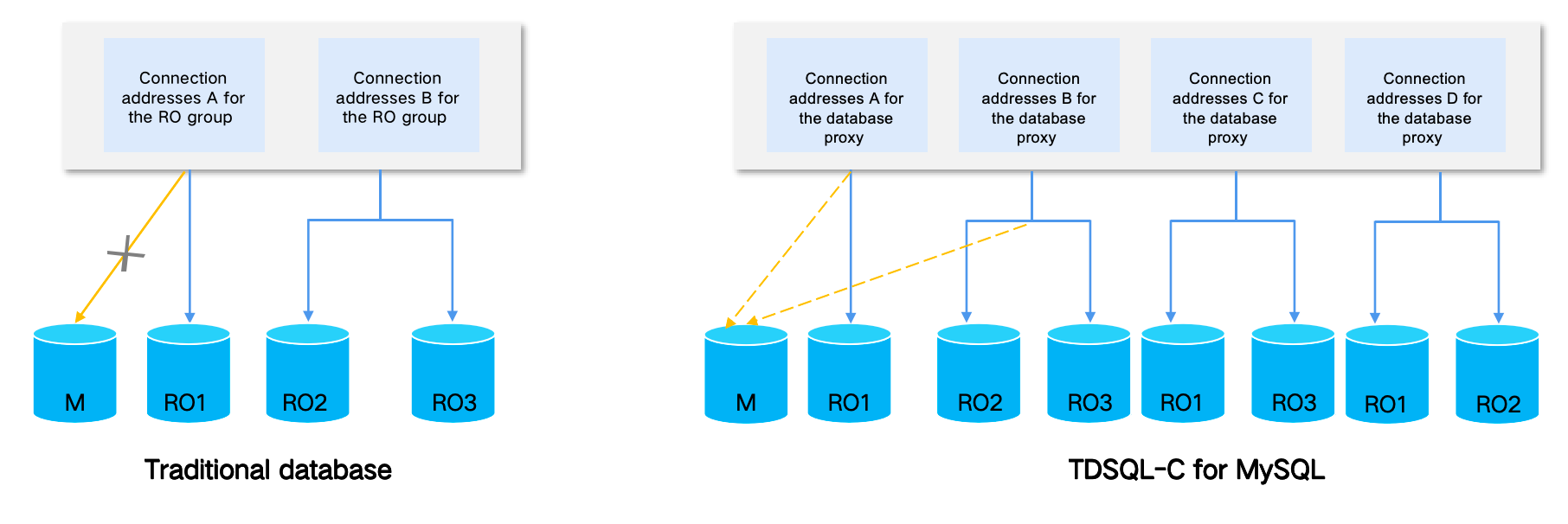
Support transaction split
The TDSQL for MySQL database proxy provides the transaction split feature. This feature separates read and write operations in one transaction to different instances for execution and forwards read requests to read-only instances, thereby lowering the load of the source instance.
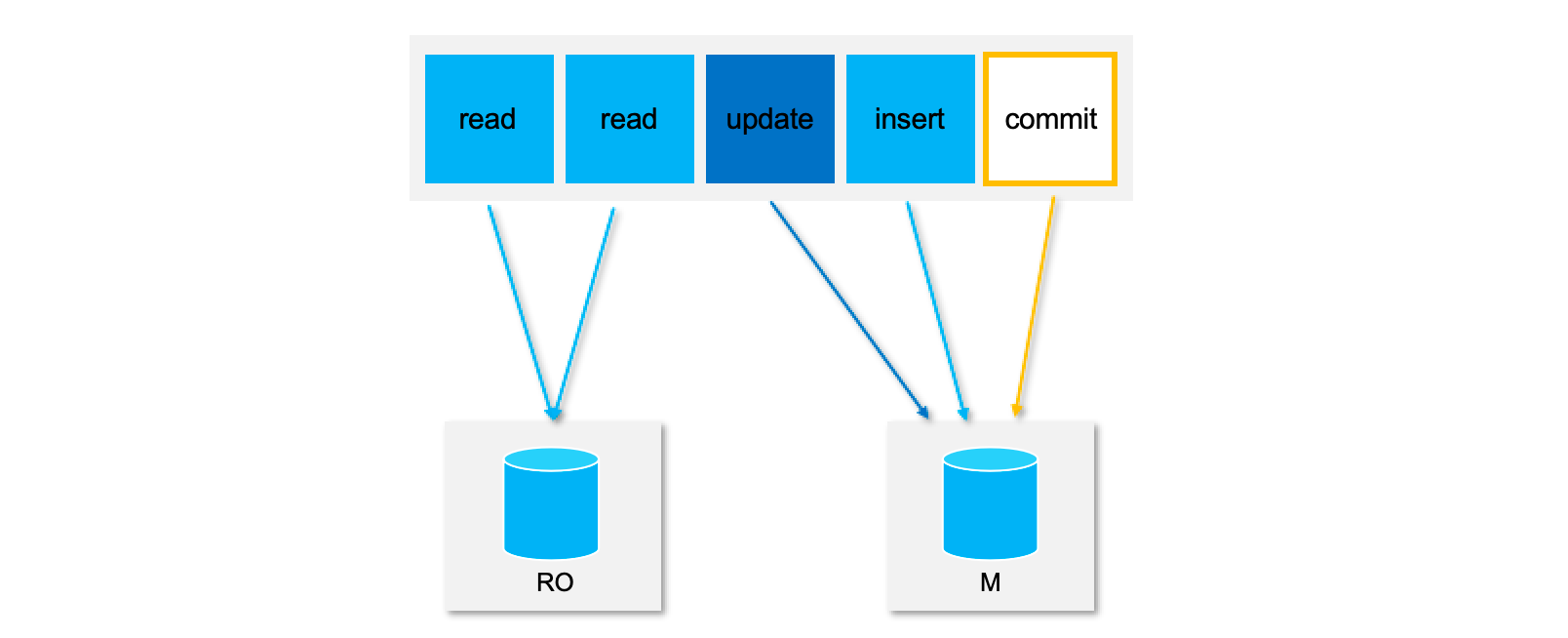
Support session-level connection pool
The TDSQL-C for MySQL database proxy supports the session-level connection pool feature. It can effectively solve the problem of excessively high database instance loads caused by frequent establishments of new non-persistent connections. If a client connection is closed, the system will determine whether the current connection is idle, and if so, the system will put it into the proxy connection pool and retain it for a short period of time, which is five seconds by default and can be customized. For more information, see Setting Session-Level Connection Pool.
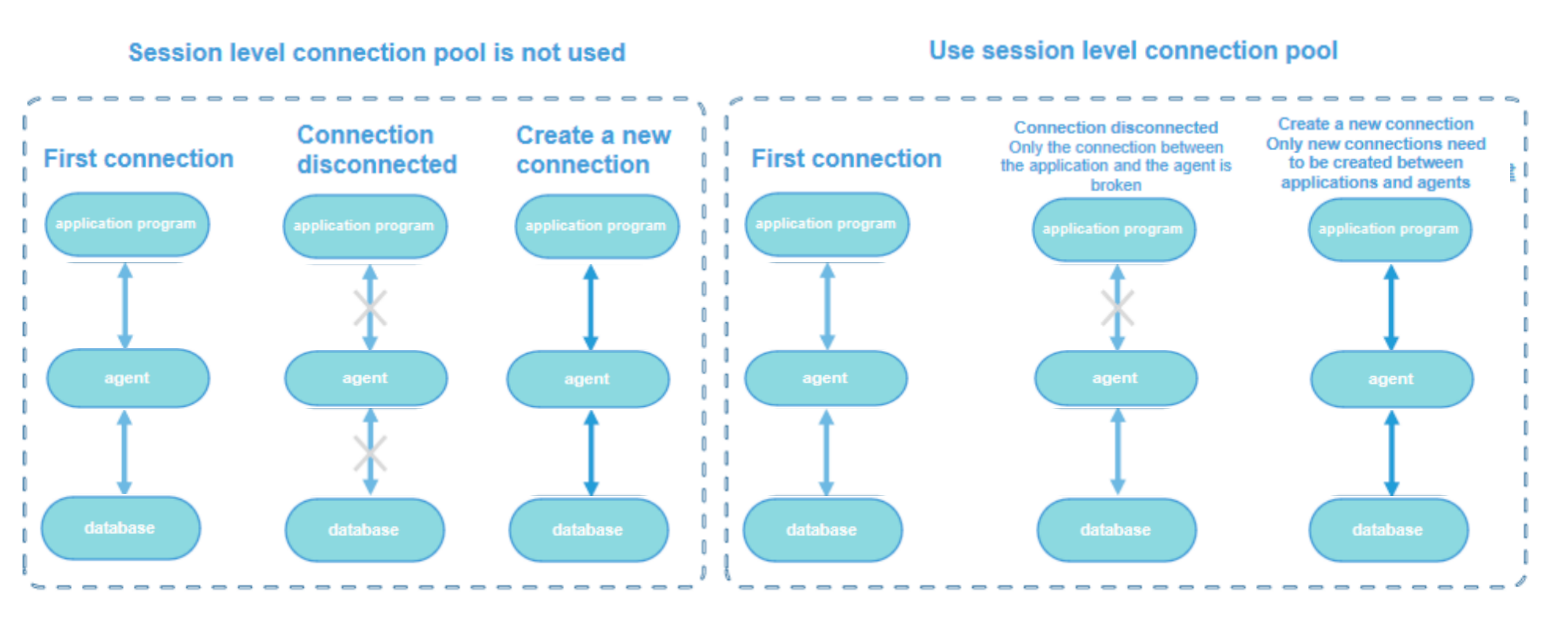
Support load rebalancing
After enabling the database proxy, you can view Connections in the proxy node list or view the performance monitoring data of each proxy node to check whether the numbers of connections on the nodes are unbalanced. If there are a large number of persistent connections in the business, adding more database proxy nodes may result in uneven node loads. If there is an imbalance in the connection count among the proxy nodes, you can redistribute the connections through load balancing to achieve a more balanced distribution.
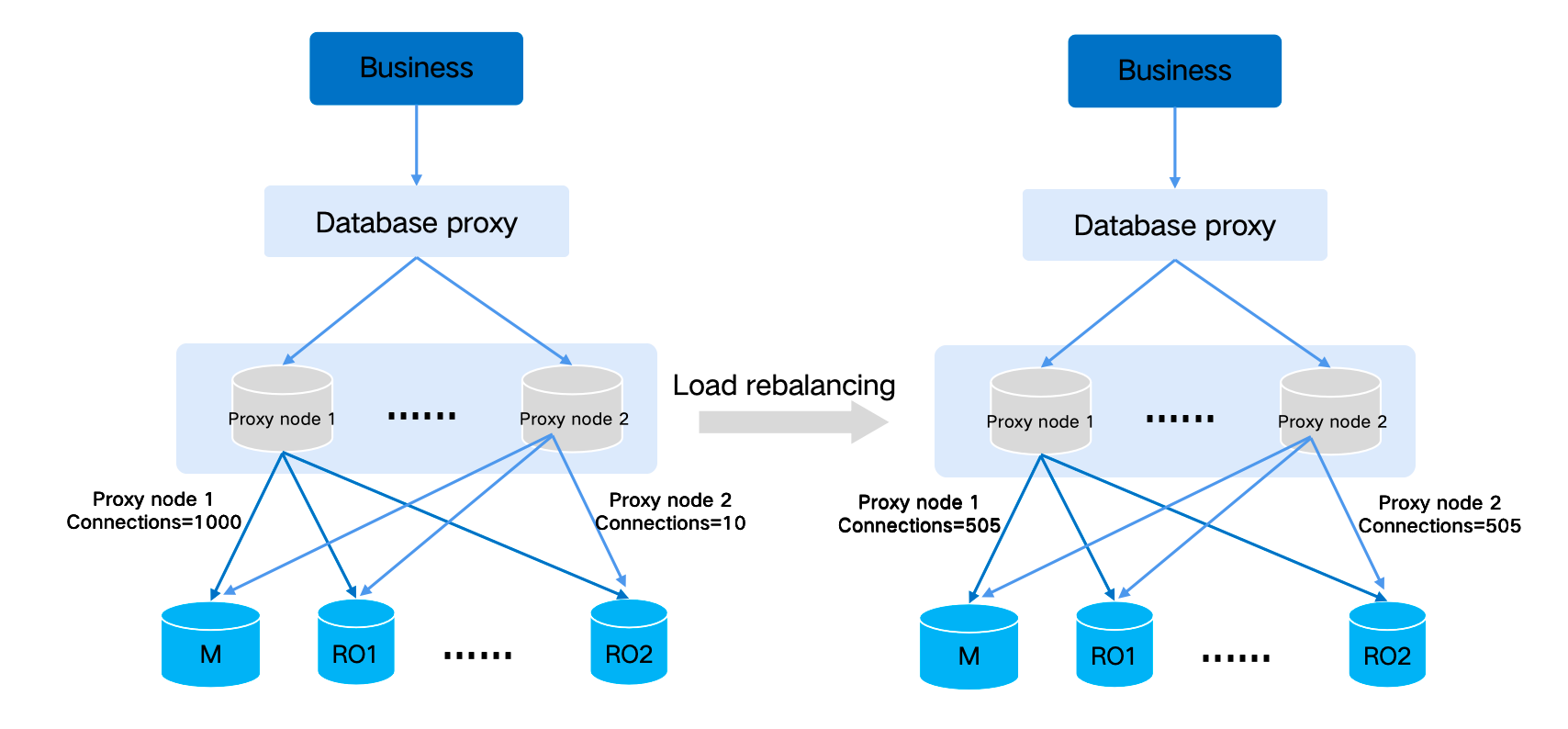
Support setting consistency levels
When there are data updates on the read-write instance, the updates will be applied to the read-only instances. The delay in data sync depends on the write workload. To ensure the consistency requirements of accessing database data, TDSQL-C for MySQL provides three different consistency levels as follows.
Eventual consistency: Data can achieve eventual consistency, ensuring that read-only instances can read the updated data. All updated data can be obtained eventually, but immediate access is not guaranteed. Due to the delay in source-replica replication, the results obtained from different nodes may differ when querying the updated data.
Session consistency: This guarantees monotonic reads in the same session, and the data updated before the execution of a read request can be queried.
Global consistency: In the same session, the data updated before the execution of a read request can be queried. Besides, the query results are consistent for requests sent through different connections.
Support setting access mode
You can set an access mode to control the connection link between the application/client and the database proxy. There are two access modes for your choice: load balancing and nearby access. The load balancing mode achieves balanced distribution of traffic, eliminating the issue of a single node being overloaded. In nearby access mode, the application connects to the database proxy node that is in the same AZ or closest to it. If there are multiple proxy nodes in the same AZ, the application will still choose the one that is closest to it. This mode has the benefits of low latency and fast speed.
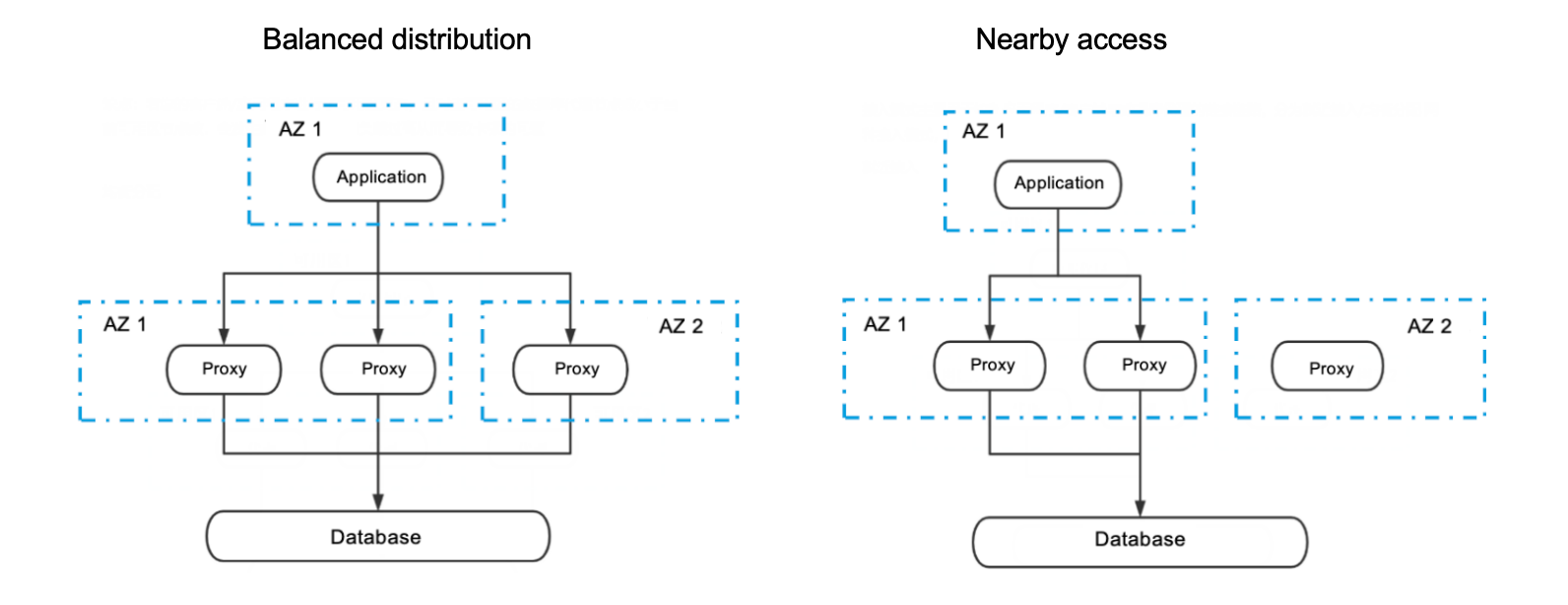
Was this page helpful?
You can also Contact Sales or Submit a Ticket for help.
Yes
No

